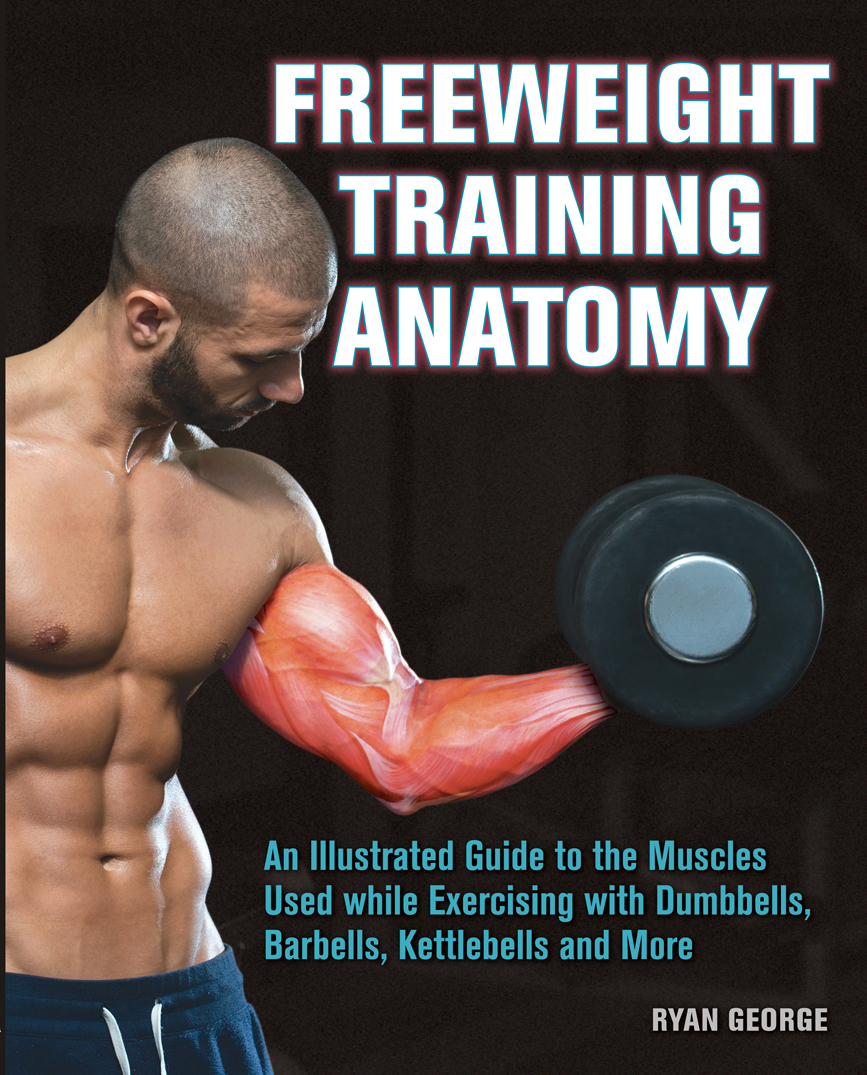
 Text Copyright 2016 Ryan George. Design and concept 2016 Ulysses Press and its licensors. Photographs copyright 2016 Rapt Productions except as noted below. All rights reserved. Any unauthorized duplication in whole or in part or dissemination of this edition by any means (including but not limited to photocopying, electronic devices, digital versions, and the Internet) will be prosecuted to the fullest extent of the law. Published in the United States by Ulysses Press P.O.
Text Copyright 2016 Ryan George. Design and concept 2016 Ulysses Press and its licensors. Photographs copyright 2016 Rapt Productions except as noted below. All rights reserved. Any unauthorized duplication in whole or in part or dissemination of this edition by any means (including but not limited to photocopying, electronic devices, digital versions, and the Internet) will be prosecuted to the fullest extent of the law. Published in the United States by Ulysses Press P.O.
Box 3440 Berkeley, CA 94703 www.ulyssespress.com ISBN 13: 978-1-61243-535-0 Library of Congress Control Number 2015944218 10 9 8 7 6 5 4 3 2 1 Acquisitions Editor: Keith Riegert Managing Editor: Claire Chun Editor: Lily Chou Proofreader: Lauren Harrison Interior design: Jake Flaherty Cover photographs: man Jasminko Ibrakovic/shutterstock.com; anatomy TsuneoMP/shutterstock.com Interior illustrations: Linda Bucklin/shutterstock.com page 2; Clip Area/shutterstock.com page 103; Design 36/shutterstock.com pages 2227, 3639, 55, 56 (right), 60, 61, 63, 64, 7577, 90, 91, 99 (left),102, 107 (left), 108111, 112, 113 (left), 114; Digital Storm/shutterstock.com pages 6972, 95, 96, 99; DM7/shutterstock.com pages 5254, 57, 58 (left), 65, 67, 93, 104 (left); Sebastian Kaulitzki pages 57, 58 (right), 66, 73 (left); TsuneoMP/shutterstock.com pages 1320, 2931, 3335, 4143, 4549, 56 (left), 62, 73 (right), 79, 80, 8688, 98, 101 (right), 104 (right), 106, 107 (right), 113 (right); Vitstudio/shutterstock.com pages 8284; York Berlin page 101 (left) Models: Ryan George, Bryan Johnson, Ashley Mitchell Distributed by Publishers Group West Please Note: This book has been written and published strictly for informational purposes, and in no way should be used as a substitute for consultation with health care professionals. You should not consider educational material herein to be the practice of medicine or to replace consultation with a physician or other medical practitioner. The author and publisher are providing you with information in this work so that you can have the knowledge and can choose, at your own risk, to act on that knowledge. The author and publisher also urge all readers to be aware of their health status and to consult health care professionals before beginning any health program. Table of Contents
Guide
CONTENTS The human body is a remarkably dynamic machine thats capable of producing an incalculable variety of movements. These movements are an essential aspect of how we interact with the world around us.
At its core, human movement consists of using our skeletal muscles to manipulate our bones. Maximizing the efficiency as well as the efficacy of movement is important for every single person. Exercise is the method by which we develop and enhance movement. Obviously, enhancing movement isnt the only reason we exercise; in fact, many people wouldnt consider it the primary or secondary reason, either. We exercise to build muscle mass, lose weight, increase athletic performance, fight off disease, and many other reasons. The one common thread, no matter what the goal, is that exercise is going to involve movement.
Theres a reason why I place so much emphasis on movement in exercise. Understanding movements and the muscles that produce them can enhance or severely diminish the effectiveness of an exercise program. When performing even the simplest of movements, its not simply about an individual muscle or even a muscle group working. More often than not, entire movement systems composed of groups of muscles are working synergistically to produce movements. This means that its important to have a working knowledge of not only what muscles are working when exercising, but also the various roles they play in producing movements. A subtle change in a movement can completely change which muscles and movement systems are involved, so any movements produced during an exercise session should be deliberate and well thought out.
Not possessing a working knowledge of the muscles involved in specific movements can, at a minimum, slow development, and, at worst, lead to injury. The purpose of this book is to give you a variety of exercises using a diverse set of modalities. The exercise descriptions are accompanied by beautiful illustrations to show the specific muscles being used as well as the roles that they play in movement. This knowledge will help you to better design, implement, and follow an exercise program. In my 15 years in the fitness industry, Ive identified guesswork as a very common theme. More often than not, people have very little structure in their exercise program.
A combination of the overwhelming amounts of information (and misinformation), conflicting theories, and the new trend of the month often result in confusion. This leads to guesswork and, often, stunted exercise programs. One of the goals of this book is to simplify exercise. Its not about reinventing the wheel or promoting a brand-new gimmick or fad, but rather giving you the meat and potatoes in a way thats easy to understand. This book consists of the concepts and ideas that I believe to be the most important and instrumental to a successful exercise program. The primary focus is on how to manipulate the muscles of the body in order to perform movements that will in turn help to develop and strengthen those muscles.
This information is presented in a way thats concise and easy to digest. In addition to the exercises and illustrations, this book also contains what I believe to be the most important and essential fitness concepts, as well as guidance on designing specific exercise programs for all levels and goals. Your Body at Work Skeletal muscles serve a variety of functions. They provide the structure and framework for our bodies. Theyre used to move bone and allow us to interact with the world. Proper muscular function is important for normal everyday activities as well as athletic performance.
Skeletal muscle is also important to many people because of its aesthetic component. We engage in weight training as a way to strengthen, build, and develop skeletal muscle. We can see examples throughout society of well-developed skeletal muscle representing an ideal aspect of the human form. There are over 200 bones in the human body, and they come in a variety of shapes, sizes, and compositions. Bones serve several different functions but, for the purposes of this book, well focus on movement. Together, bones form the skeleton and can be used as a series of levers used to facilitate movement.
A joint is an area in which two or more bones meet, allowing for movement. Some joints, like the elbow, move in one direction, while other joints, like the hip, move in more than one direction or have free range to move. Most of the joints throughout the body are acted on by more than one muscle. Understanding the specific movements that a contracted muscle should produce is key to exercise as it allows you to target specific individual muscles and muscle groups. There are well over 600 skeletal muscles in the human body. Each muscle is individually attached to bones throughout the body.
When a muscle contracts, it works to help move a joint in a specific direction. Some muscles, like the hamstrings, act on multiple joints while others, like the soleus, act on only one joint. Groups of individual muscles tend to work together to produce movement. When we refer to muscles, like the quadriceps or the pectorals, were often referring to a group of muscles that work together. The exercise chapters in this book are separated based on muscle group, and each chapter will break down the individual muscles involved and their role in movement. 
Next page

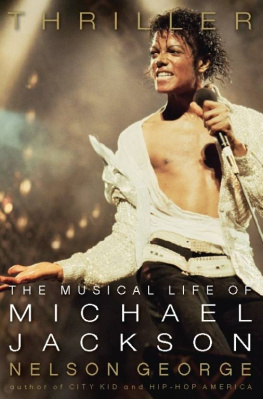
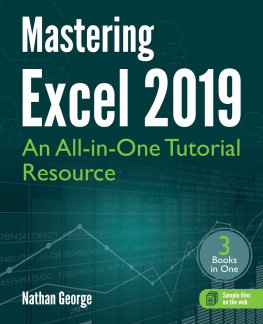



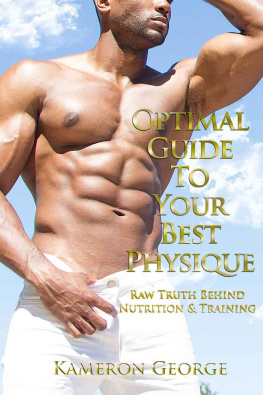
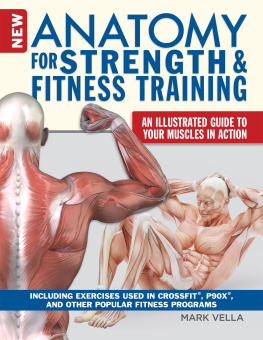
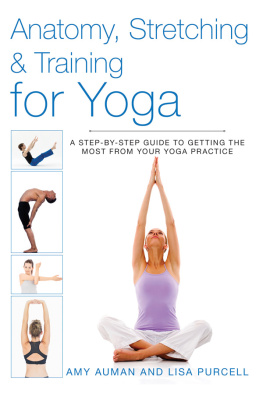
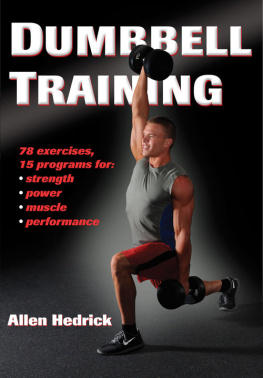
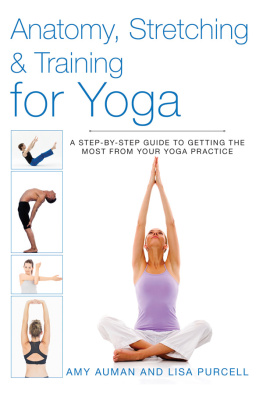
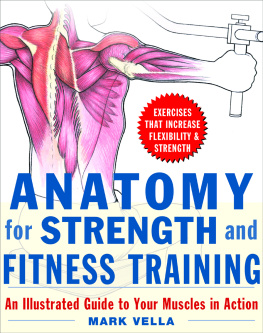
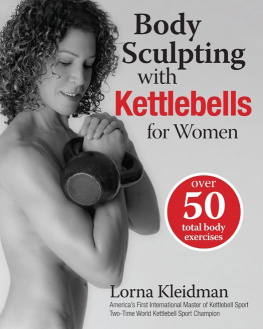

 Text Copyright 2016 Ryan George. Design and concept 2016 Ulysses Press and its licensors. Photographs copyright 2016 Rapt Productions except as noted below. All rights reserved. Any unauthorized duplication in whole or in part or dissemination of this edition by any means (including but not limited to photocopying, electronic devices, digital versions, and the Internet) will be prosecuted to the fullest extent of the law. Published in the United States by Ulysses Press P.O.
Text Copyright 2016 Ryan George. Design and concept 2016 Ulysses Press and its licensors. Photographs copyright 2016 Rapt Productions except as noted below. All rights reserved. Any unauthorized duplication in whole or in part or dissemination of this edition by any means (including but not limited to photocopying, electronic devices, digital versions, and the Internet) will be prosecuted to the fullest extent of the law. Published in the United States by Ulysses Press P.O.